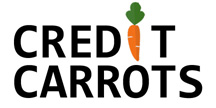The dividend capture strategy involves buying a dividend stock just before the ex-dividend date, and then selling it after securing the dividend. The idea is to own the stock just long enough to get paid the dividend, and then unload the shares. You can then move your money to the next dividend paying stock to execute the strategy again.
If you’re able to sell the shares for close to the buying price, then you’ll pocket the dividend as profit after owning the stocks for just a few days.
How to Implement the Dividend Capture Strategy
To execute the dividend capture strategy, you must buy the stock before the ex-dividend date and sell it on or after the ex-dividend date.
Here are the important dates that you need to keep track of.
The declaration date. This is the date on which the company confirms there will be a dividend. This is usually well in advance of the ex-dividend date.
The ex-dividend date. You need to own the stock before the ex-dividend date in order to receive the dividend. There is another date called the “record date”, but as long as you buy before the ex-dividend date you will automatically be covered for the record date.
The payment date. This is the date on which the dividend will be paid.
Does the Dividend Capture Strategy Work?
Theoretically, the dividend capture strategy should not work. If the markets are 100% efficient, then the dividend amount would be reflected in the share price until the ex-dividend date, at which time the price should fall by the dividend amount.
As an example, a stock might be trading at $101 dollars prior to the ex-dividend date with a declared dividend of $1. On the ex-dividend date, the stock should fall to $100 since $1 of dividend is paid out. If this happens, then you’re not making any money.
Since markets do not operate with such 100% efficiency, it allows us some opportunity to make use of this strategy. The most common scenario we see is that a trader captures the dividend and sells the stock at a slight loss – while remaining slightly profitable overall.
The bottom line is that you can make a small profit, but you have to pick your stock carefully before executing this strategy – otherwise you can easily lose money.
To see if you’re able to pick the rights stocks, make a list of stocks that you’re considering doing a dividend capture strategy with. Now, go look at the price/dividend history to see if you would’ve actually made any money had you used this strategy on that stock.
Additional Considerations With a Dividend Capture Strategy
Taxes. “Qualified dividends” and “ordinary dividends” are taxed differently in the United States. The dividends captured using this strategy are considered “ordinary dividends” since traders do not hold them for long. These dividends incur the normal income tax rate, which can be as high as 37% if you’re trading in an account that is not tax-sheltered.
Transaction Costs. Don’t forget that your broker might charge you fees for buying and selling the stock. If you’re only buying/selling small dollar amounts, then these fees might eat up a significant portion of your profit.
Should you use the dividend capture strategy? Most people would say it’s not worth the hassle for the small gains. However, if you find a stock that has past pricing and dividend movements which allow you to pocket gains that you’re happy with then it might be worth trying this out.
Let’s take a look at a real life example for a stock called Dorel Industries (DII.B).
On January 4th 2022 they declared a special dividend of $15 CAD ($12 USD) with an ex-dividend date of February 2nd 2022.
On January 4th, their stock price closed at $23.92 (up from a close of $20.49 the previous day). The reason it didn’t shoot up more was because most people were expecting this special dividend as a result of some sales of its assets.
The stock price then climbed fairly steadily leading up to the ex-dividend date. On February 2nd (the ex-dividend date), their stock price closed at $12.37 (down from a close of $26.59 the previous day). However, remember that there’s also that $15 dividend so if you had stock then really you’re at around $27.37.
The 27.37 stock price is 14% higher when compared with the closing price on January 4th – when they announced the dividend. It is also slightly higher than the share price the day before the dividend was paid out.
As you can see, there is money to be made with the dividend capture strategy, but you have to be very careful with stock selection. With Dorel, the company was also buying back shares so that helped keep the share price high after the special dividend was paid out.
We are not financial advisors, and no content on this site should not be taken as financial advice. No guarantee can be made if you invest based on the information provided on this blog. We make no warranty of any kind regarding the blog and/or any content, data, materials, information, products or services provided on the blog.











Leave a Comment